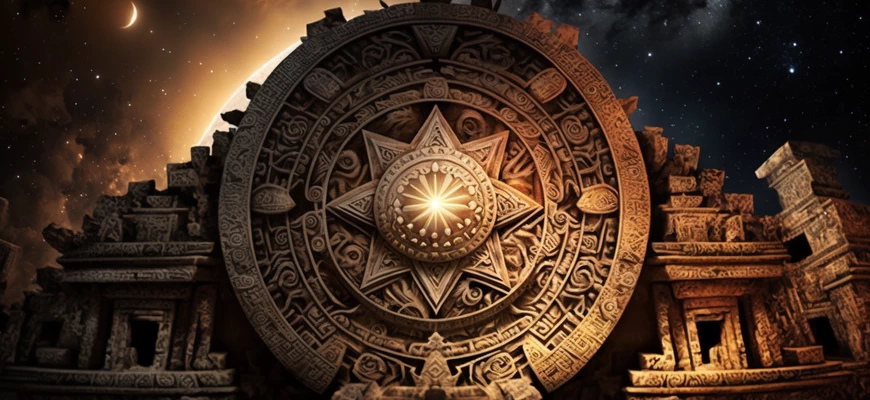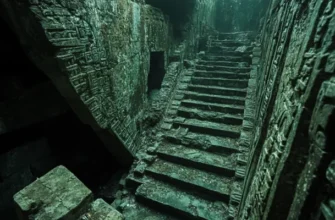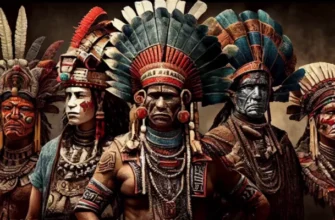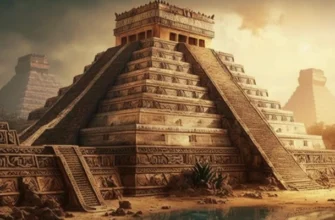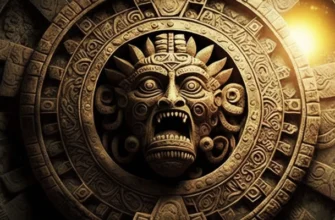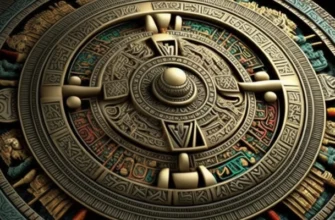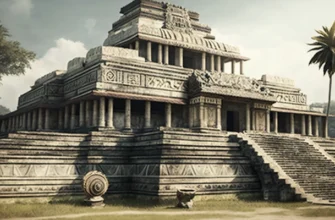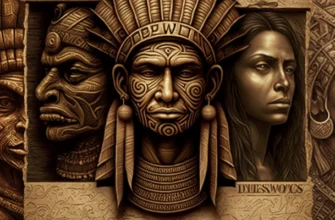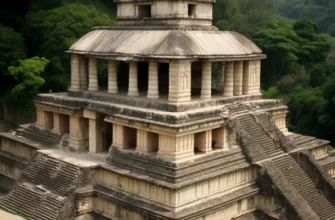The amazing knowledge of Mayan stargazers has attracted the attention of scientists and the general public for its accuracy and complexity. Astronomy in the Mayan culture played an important role in the development of the calendar, which allowed for accurate prediction of calendar events and revival of culture and religion. Astronomical observations and their significance, as well as modern research and findings related to the preservation and study of ancient Mayan knowledge and its use in modern astronomy and science.
Astronomy in Mayan culture
Astronomy in Mayan culture was very important and played a key role in shaping their worldview. The Maya were excellent observers of the sky and the study of space was no less important to them than religion or culture. With the help of astronomical knowledge, the Maya managed to develop an extremely accurate calendar that included a variety of events from earthly to cosmic. The Maya discoveries are related to stellar observations and inspired their artistic, architectural, and religious creations.
Mayan calendar: accuracy and complexity
The Mayan calendar is a fairly complex and accurate calendar system that was used in Mesoamerica before the Spanish conquest in the 16th century.
The Mayan calendar consists of three different calendar systems: gag (general calendar), tuna (round calendar), and long-kun (duration counter). Each of these systems has its own characteristics and is used for different purposes.
The main element of the Mayan calendar is a number system based on the number 20. All the numbers in the Mayan calendar are divided into five groups, each of which contains four numbers. Each number in a group is represented by a symbol consisting of dots and dashes. This number system is key to accurately determining dates and times in the Mayan calendar.
The Mayan calendar also has a complex system of cycles that allows for precise determination of days, months, and years. For example, the gag calendar consists of 365 days and has 18 months of 20 days each, plus five more days.
The accuracy of the Mayan calendar is quite high, and it was used to determine the dates of distant events thousands of years before Christ. However, the system of cycles and the complexity of the calendar make it quite difficult for modern people to understand and use. Therefore, although the Mayan calendar remains an amazing achievement, it is not used in everyday life today.
Astronomical observations and their significance
The Maya were known for their highly accurate astronomical observations, which helped them determine dates and plan their rituals and events.
One of the most important astronomical observations for the Maya was the observation of the movement of the Sun. They noted the exact dates of the Sun’s passage across the equator and the northern and southern solstices. They also observed the different positions of the Sun in the sky, which helped them accurately determine the time of year and plan sowing and harvesting.
The Maya also studied the movements of the Moon and planets such as Venus and Mars. They observed the phases of the moon and noted the exact dates of full and half moons. They also studied the movement of Venus and noted the exact dates when it appeared in the morning or evening sky.
The Maya also used their astronomical knowledge to calculate and predict solar and lunar eclipses. They considered these phenomena to be very important, and associated them with various mythological and religious events.
Mayan astronomical observations were essential for the proper functioning of their calendar system, as well as for ritual and religious practices. They played an important role in the development of science and culture of the Maya civilization and later became a source of study for modern astronomers and historians.
Reviving culture and religion through astronomy
Now, in our time, interest in Mayan culture and religion is growing again, and Mayan astronomy is one of the main sources of this revival.
Much of the Mayan astronomical knowledge is preserved in their manuscripts, which have been preserved and passed down from generation to generation. These manuscripts detail a variety of astronomical observations and the Mayan calendar system.
With the help of these manuscripts and modern scientific research, some of the Mayan knowledge of astronomy has been recovered. This has not only improved our understanding of astronomy, but also opened up new possibilities in the field of cultural and religious practice.
Many of the Mayan traditions and rituals are related to astronomical events, such as solar and lunar eclipses, full and half moons, and the different positions of the Sun in the sky. The revival of Maya astronomy has allowed us to re-evaluate the significance of these events and the traditions and rituals associated with them.
In addition, the revival of Mayan culture and religion through astronomy contributes to the development of tourism in the regions where the Maya once lived. People from all over the world travel to Mexico, Guatemala, Belize, and other countries to learn more about the culture and history of this ancient civilization.
Thus, Mayan astronomy is of great importance not only for understanding astronomy itself, but also for reviving Mayan culture and religion in the modern world. Thanks to Mayan astronomical knowledge, we can better understand their culture, religion, and worldview. Many of the astronomical observations made by the Maya were extremely accurate and impressive for the time.
For example, the Mayan calendar used two separate timekeeping systems – solar and lunar. The Mayan solar calendar, known as the Haab, had 365 days and corresponded to the tropical year to within 20 seconds. The Mayan lunar calendar, known as Tzolkin, had 260 days and was used to determine various religious holidays and rituals.
The Maya also developed a very precise system of keeping track of time for long periods known as the long counter. This system uses a basic unit of time known as a kin, which is equal to about 20 years. With the long counter, the Maya could accurately date events over very long periods of time, such as the dates of solar eclipses.
Mayan astronomy was also linked to their religion and mythology. The Maya believed that all astronomical events affected their lives and destiny. They believed that every day and every hour had its own spirit that influenced human life. This belief influenced their rituals and religious festivals, which are associated with astronomical events.
In the modern world, studying Mayan astronomy helps us to better understand their culture, quiet religion, and worldview. For example, studying Mayan calendars helps us better understand their rituals and ceremonies. The Maya’s astronomical knowledge has also helped us better understand their architecture, as many of their buildings and monuments were oriented to relevant astronomical events.
For example, the village of Chichen Itza in Mexico contains buildings such as the Kukulkan, also known as the Temple of Kukulkan, which is considered one of the most prominent Mayan architectural monuments. This building has 365 steps – one for each day of the year – and four side staircases that account for the number of years in the long cycles that the Maya used in their calendar.
The Maya also believed that during astronomical events, such as eclipses, there comes a time when spirits can move between worlds. They performed special rites and rituals to ensure safety and well-being during these transitions. This helps us to better understand their beliefs and way of life.
In general, Mayan astronomical knowledge was very important to their culture and religion. Studying this knowledge helps us to better understand their worldview and experiences. Also, studying the Maya can help us to better understand our own culture and history, as many aspects of Mayan culture have significant parallels with other cultures
The Maya were very observant and detailed astronomers who knew about the solar and lunar eclipses, distances to the stars, moon phases, and planetary movements. They used this knowledge to create calendars and to perform rituals and ceremonies.
One of the most famous Mayan calendars, known as the Tzolkin, contained 260 days that they used for rituals and prophecy. Another calendar, known as the Haab, contained 365 days and was used for farming and land management.
The Maya also used their knowledge of astronomy to create their architecture. For example, many Mayan buildings were aimed at certain astronomical events, such as the equinoxes and solstices. This helped them to keep track of different time periods and to conduct rituals and ceremonies.
In the modern world, studying Mayan astronomical knowledge can help us better understand modern science and technology. For example, their knowledge of the planets and stars can be used to explore space and develop space technology.
Also, studying Mayan culture and religion can help us better understand the modern world view and the diversity of cultures in the world. It can help us to better understand and respect other cultures and identify commonalities between different cultures.
Conclusion
In conclusion, we can say that the Mayan knowledge of astronomy and space was amazing and impressive for their time. They carefully observed celestial bodies and gained new knowledge that they used for their cultural and religious practices.
The Maya created elaborate calendars that reflected their knowledge of astronomy and mathematics, and they used these calendars to conduct rituals and ceremonies. They also used their knowledge of astronomy for architecture and land use.
Today, the Mayan knowledge of astronomy continues to amaze us, and it can be used to explore space and develop space technology. Studying Mayan culture and religion can also help us better understand the modern world and identify commonalities between different cultures.
Thus, the Mayan knowledge of astronomy is an example of how ancient civilizations can open up new horizons of knowledge, and it emphasizes the importance of exploring the cultural and scientific heritage of different peoples around the world.
